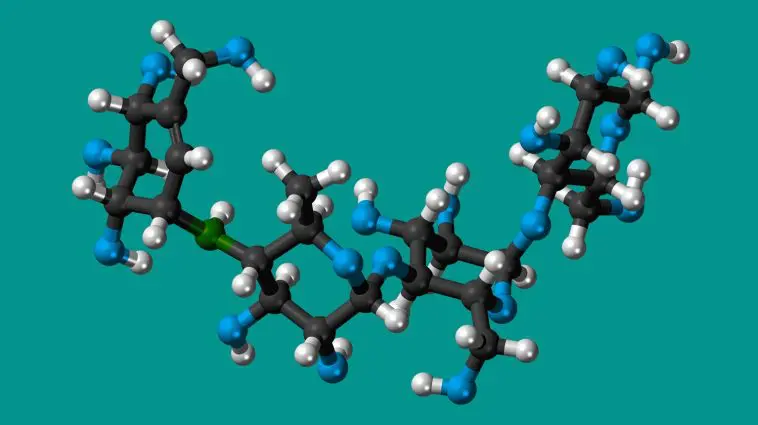[Originally published in 2014 as More Amazing News About Breast Milk]
Recently, I wrote about the bacteria in human breast milk. While that may sound like a bad thing, it is actually a very good thing. Over the years, scientists have begun to realize just how important the bacteria that live in and on our bodies are, and the bacteria in breast milk allow an infant to be populated with these beneficial microbes as early as possible. Not surprisingly, as scientists have continued to study breast milk, they have been amazed at just how much it’s composition is devoted to establishing a good relationship between these bacteria and the infant who is consuming the milk.
Feed the Good Bugs
For example, research over the years has shown that human breast milk contains chemicals called oligosaccharides. These molecules, such as the one pictured above, contain a small number (usually 3–9) of simple sugars strung together. Because oligosaccharides are composed of sugars, you might think they are there to feed the baby who consumes the milk, but that’s not the case. The baby doesn’t have the enzymes necessary to digest them. So what are they there for? According to a review article in Science News:1
These oligosaccharides serve as sustenance for an elite class of microbes known to promote a healthy gut, while less desirable bacteria lack the machinery needed to digest them.
In the end, then, breast milk doesn’t just give a baby the bacteria he or she needs. It also includes nutrition that can be used only by those bacteria, so they can stay within the baby! Indeed, this was recently demonstrated in a study in which the authors spiked either infant formula or bottled breast milk with two strains of beneficial bacteria. After observing the premature babies who received the concoctions for several weeks, they found that the ones who had been fed bacteria-spiked formula did not have nearly as many of the beneficial microbes in their intestines as those who had been fed bacteria-spiked breast milk.2
Resist the Bad Bugs
But it turns out that these oligosaccharides do more than just feed the desirable microbes; they also repel the undesirable ones! In a review article written for the journal Glycobiology, Lars Bode calls them Human Milk Oligosaccharides (HMOs). He says:3
An accumulating body of evidence suggests that HMOs are antiadhesive antimicrobials that serve as soluble decoy receptors, prevent pathogen attachment to infant mucosal surfaces and lower the risk for viral, bacterial and protozoan parasite infections.
So if these HMOs are so beneficial to children, shouldn’t scientists be trying to put them in infant formula for those babies who cannot be breastfed? That would be ideal, but as the Science News article I mentioned puts it:4
But extracting or producing human milk oligosaccharides on an affordable, industrial scale won’t be easy. Synthesizing the sugars is an expensive headache because the molecules – about 200 of which have been identified so far – are put together in a dizzying array of configurations.
In the end, the most likely alternative for getting them into infant formula is to genetically engineer some bacteria to produce the most useful ones for us.
When I was born, it was popular to avoid breastfeeding so mothers could use a “scientifically-developed” infant formula. Some people actually thought that scientists could design a better food for babies than what was found in breast milk. Of course, if breast milk had been produced by random mutation filtered through natural selection, that would probably have been true. However, breast milk has been designed by an all-powerful Creator to provide infants with just what they need. As current research clearly shows us, it is significantly better than anything that can be designed by even our best scientific endeavors.
References
- Jessica Shugart, “Motherlode: Superhero sugars in breast milk make the newborn gut safe for beneficial bacteria,” Science News January 11, 2014, p. 22
- Underwood MA, Kalanetra KM, Bokulich NA, Lewis ZT, Mirmiran M, Tancredi DJ, and Mills DA, “A comparison of two probiotic strains of bifidobacteria in premature infants,” Journal of Pediatrics 163:1585-1591.e9, 2013 (Please note that the decision to feed the children formula or bottled breast milk was not associated with the study in any way.)
- Bode, L, “Human milk oligosaccharides: every baby needs a sugar mama,” Glycobiology 22:1147-62, 2012
- Jessica Shugart, p. 23






